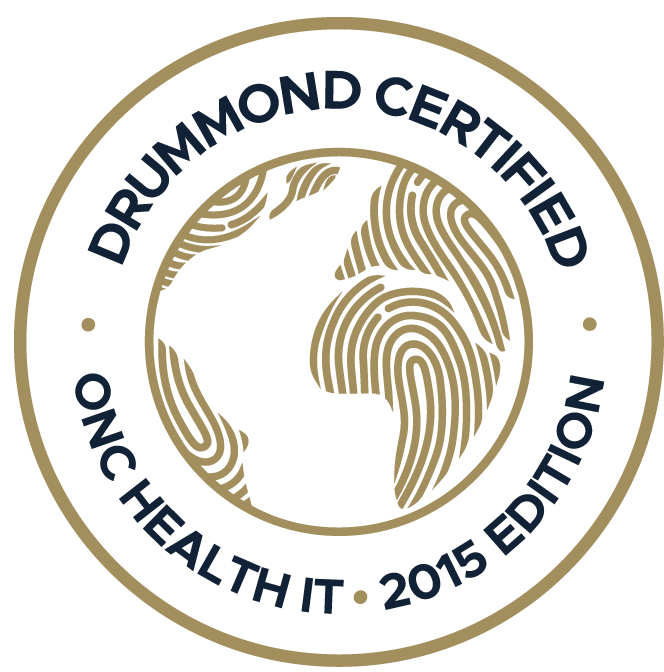Is your practice struggling to overcome operational bottlenecks despite trying everything from hiring extra staff to outsourcing certain tasks? A reliable healthcare practice management software might be the answer...
In the 21st century, like all other domains, the healthcare sector has evolved unprecedentedly. However, the COVID-19 crisis boosted this evolution and moved the industry in another direction where most of the processes are automated, cutting tasks' administrative and manual performance. Integrated practice management (IPM) and revenue cycle management are the sub-sectors of healthcare that were different from how they were a few years back.
In today's evolved healthcare landscape, healthcare providers face numerous challenges, with financial management being a prominent concern. Revenue Cycle Management (RCM) plays a pivotal role in ensuring the financial health of healthcare practices. To optimize RCM processes, healthcare providers increasingly turn to Integrated Practice Management systems.
In this blog, we will delve into details of IPM and RCM, i.e., the essential role of Integrated Practice Management in Revenue Cycle Management, effective ways to enhance RCM, challenges associated with this integration, and last but not least, how Practice EHR is The One Solution.

Understanding Integrated Practice Management
Integrated Practice Management (IPM) is a software solution that streamlines medical practice operations, including appointment scheduling, electronic health records (EHR) management, billing, and more.
IPM systems consolidate these functions into a unified platform, enhancing efficiency and reducing manual work. IPM is one of the primary factors that impacts Revenue Cycle Management. The efficiency of billing, appointment scheduling, revenue reporting, eligibility verification, etc., of the companies that use these integrated systems is different compared to those that don't.
The Synergy Between Integrated Practice Management and RCM
Here are the domains directly impacted by the IPM integration of revenue management operations of a practice.
1. Efficient Patient Data Management
One of the primary advantages of IPM is its ability to maintain accurate and up-to-date patient data. This is crucial for RCM, as errors or outdated information can lead to claim denials and payment delays. IPM systems ensure that patient data is consistently accurate, reducing the risk of revenue loss.
2. Streamlined Billing and Claims Processing
Integrated Practice Management (IPM) systems are designed to seamlessly integrate billing and claims processing, creating a smooth and efficient workflow for healthcare practices. This integration reduces the risk of errors and automates claim submissions, resulting in accelerated payment collection. As a result, healthcare practices can expect a faster revenue turnaround, allowing them to focus on providing quality care to their patients.
3. Enhanced Appointment Scheduling:
Effective appointment scheduling is essential for any healthcare organization to optimize its revenue. Integrated Practice Management (IPM) systems provide healthcare professionals with the tools to manage their appointment bookings efficiently. By utilizing IPM systems, healthcare providers can reduce patient no-shows while maximizing their billable hours. These systems can automate appointment reminders, manage patient waitlists, and streamline scheduling. Therefore, IPM systems have become vital in ensuring that healthcare organizations can optimize their revenue and provide their patients with the best possible care.
4. Improved Patient Engagement
The research shows that the higher the level of patient engagement, the more likely patients are to continue their treatment plans and follow up on outstanding payments. IPM systems often include patient portals and communication tools that enhance patient engagement, leading to improved revenue collection.
5. Real-time Analytics and Reporting
Integrated Practice Management (IPM) systems provide healthcare providers with real-time insights into the financial well-being of their practice. By offering a comprehensive suite of management tools, IPM systems enable providers to identify trends, track key performance indicators, and make decisions backed by the data that optimize revenue streams and improve overall operational efficiency.
Challenges in Implementing Integrated Practice Management for RCM
While the benefits of integrating IPM with RCM are substantial, there are challenges to consider:
1. Cost of Implementation
Integrating IPM systems can be costly, both in terms of software and staff training. Smaller practices may face budget constraints when implementing such solutions.
2. Data Migration
Transitioning to an IPM system requires migrating existing patient data and financial records. This process can be time-consuming and prone to data integrity issues if not handled carefully.
3. Resistance to Change
Healthcare providers and staff may resist change, especially if they are accustomed to traditional, paper-based processes. Overcoming this resistance through training and support is essential.
4. Security Concerns
IPM systems handle sensitive patient data, making data security a top priority. Ensuring compliance with healthcare data privacy regulations like HIPAA is crucial.
Best Practices for Integrating IPM into RCM
To successfully integrate Integrated Practice Management into Revenue Cycle Management, the best practices to follow are:
- Thorough Needs Assessment
Before selecting an Integrated Practice Management (IPM) system, it is mandatory for a practice to conduct a full-fledged needs assessment to identify the specific requirements of your practice. This will help you choose a solution that aligns with your goals and meets your needs.
- Comprehensive Training
It is crucial to provide thorough training to all staff members to ensure they are proficient in using the IPM system. In fact, according to a recent study, companies that offer comprehensive training programs have a 218% higher income per employee than those that do not pay attention to providing employees with formal training. The training should cover all aspects of the system, including scheduling, billing, and credentialing, which involves verifying healthcare practitioners' education, training, certifications, malpractice coverage, and expertise.
- Data Migration Strategy
Develop a meticulous data migration plan to ensure a smooth transition. Verify data integrity after migration to avoid potential issues.
- Regular Updates and Maintenance
Keep the IPM system up to date with the latest software updates and security patches. Regular maintenance helps prevent system vulnerabilities.
- Data Security Measure
Implementing robust data security measures to protect patient information from potential threats is crucial. Data encryption, access controls, and auditing are essential for data security. Encryption ensures that sensitive data is protected by transforming it into an unreadable format that can only be decrypted using a specific key. Access controls enable authorized personnel to access patient information while preventing unauthorized access. Auditing helps track patient data-related activities, providing an additional layer of security. By implementing these measures, healthcare organizations can ensure that patient information is secure and protected from cyber-attacks, data breaches, and other potential security threats.
- Continuous Monitoring and Improvement
Continuously monitor the performance of the integrated system and gather feedback from staff. Use this information to make improvements and optimize processes.
Conclusion
In conclusion, integrating Integrated Practice Management into Revenue Cycle Management is a strategic move for healthcare providers looking to enhance their financial health. The synergy between these systems streamlines operations, reduces errors, and accelerates revenue collection. However, the implementation process should be carefully planned, and data security must remain a top priority.
As healthcare practices adapt to the changing landscape, embracing technology solutions like IPM becomes increasingly vital. By following best practices and overcoming challenges, healthcare providers can leverage the power of integrated systems to ensure the financial sustainability of their practices. Integrated Practice Management is not just a tool; it's a catalyst for efficient Revenue Cycle Management in the modern healthcare environment.

Integrated Practice Management and Revenue Cycle Management by Practice EHR
Practice EHR has developed its RCM service through years of experience and dedicated efforts to create a proven technology from scratch. Unlike most billing companies that rely on third-party products, we have written and developed our software in-house with the help of industry experts and billing professionals. Numerous nationwide companies, including small and large billing companies, medical centers, surgery centers, and private practices, widely use our software. Our commitment to incorporating best practices, experience, and advanced technology ensures that we provide timely and accurate medical billing services. You can trust us to enhance your medical office with revenue cycle management.
Request your FREE DEMO today and take your practice to new heights.
Topics: EHR Solution, New Technology, digital age, Revenue Cycle Management, Medical Billing, Practice Management Software, Integrated Practice Management
RECENT POSTS



TOPICS
- EHR Solution (191)
- EHR (124)
- digital age (117)
- Patient Care (116)
- Medical Billing (110)
- Specialty-Specific EHR (110)
- Industry Update (97)
- Technology in Healthcare (84)
- EHR Features (79)
- Small Practice (77)
- Medical billing services (72)
- HIPAA Security (62)
- Integrated EHR (62)
- RCM (62)
- New Technology (44)
- Cloud-based EHR (43)
- Telemedicine (42)
- Healthcare Office Management (40)
- Practice EHR News (38)
- Kiosk (31)
- Revenue Cycle Management (28)
- AI Solutions (23)
- ePrescribing (21)
- AI Scribing (16)
- Best EHR Software (16)
- EMR (12)
- Practice Management Software (12)
- AI-powered Medical Billing (10)
- Client Favorites (10)
- Practice Automation (10)
- TeleVisit (10)
- The ONE (10)
- AI EHR (9)
- Switching to New EHR (9)
- MACRA/MIPS (8)
- Patient Portal (8)
- Urgent Care (8)
- AI Scribe (7)
- Best EHR Practice (7)
- EHR Integration (7)
- Psychiatry EHR (7)
- E-Prescribing (6)
- Product Updates (6)
- events (6)
- AI scanning (5)
- MIPS (5)
- Automated Health Tools (4)
- HIPAA (4)
- Insider (4)
- Internal Medicine EHR (4)
- MIPS Reporting (4)
- Mobile EHR (4)
- Orthopedics EHR (4)
- Podiatry (4)
- Podiatry EHR (4)
- Telehealth Platform (4)
- Chiropractic EHR (3)
- Digital Experiences (3)
- EHR Flaws (3)
- EHR Implementation (3)
- EHR for Chiropractors (3)
- EHR for Small Practices (3)
- Family Medicine EHR (3)
- Integrated Practice Management (3)
- Medical Practice Management Software (3)
- Patient Check-in Kiosk (3)
- PracticeEHR GO App (3)
- Regulatory Updates (3)
- Telehealth Platforms (3)
- Clearinghouse (2)
- Dermatology EHR (2)
- EHR Scheduling (2)
- Eligibility Verification in Medical Billing (2)
- Foot and Ankle Care (2)
- Foot and Ankle EHR (2)
- Health records 101 (2)
- Medical Coding Services (2)
- Medical Credentialing (2)
- Multilingual AI Scribe (2)
- Quality of Patient Care (2)
- Reporting Under MIPS (2)
- Risk and Liability in Medical Settings (2)
- What Works Clearinghouse (2)
- AI Scan (1)
- Bariatric EHR (1)
- Behavioral Health Practices (1)
- Billing Communication (1)
- Billing for Private Practices (1)
- Cardiology EHR (1)
- Cash Flow (1)
- Cashless Payments (1)
- Charting (1)
- Data Security (1)
- Dos and Don'ts (1)
- EHR Guides (1)
- EHR KPIs (1)
- EHR Questions to Ask (1)
- EHR Transition (1)
- EHR for Chronic Illness (1)
- EMR vs EHR Difference (1)
- ENT EHR (1)
- Endocrinology EHR (1)
- Family Medicine (1)
- Gastroenterology (1)
- Gastroenterology EHR (1)
- General Surgery EHR (1)
- Geriatric AI scribe (1)
- Geriatrics EHR (1)
- Guides (1)
- Healthcare Compliance Certification (1)
- Healthcare Practice Office Management (1)
- Help Center Videos (1)
- Insurance Reimbursement (1)
- KPI (1)
- Key Performance Indicators (1)
- Lab Processing (1)
- MACRA (1)
- Medical Billing Partner (1)
- Nephrology EHR (1)
- Neurology EHR (1)
- Pain Management EHR (1)
- Pediatrics EHR (1)
- Physical Therapy EHR (1)
- Practice Cash Flow (1)
- Practice Efficiency (1)
- Pulmonology EHR (1)
- Reconsider Your EHR (1)
- Simplify Practice Management (1)
- Staffing in Healthcare (1)
- Switch Medical Billing Providers (1)
- Urgent Care Medical Billing (1)
- Urology EHR (1)
- Voice-Activated AI Scribe (1)
- insurance claim denials (1)








